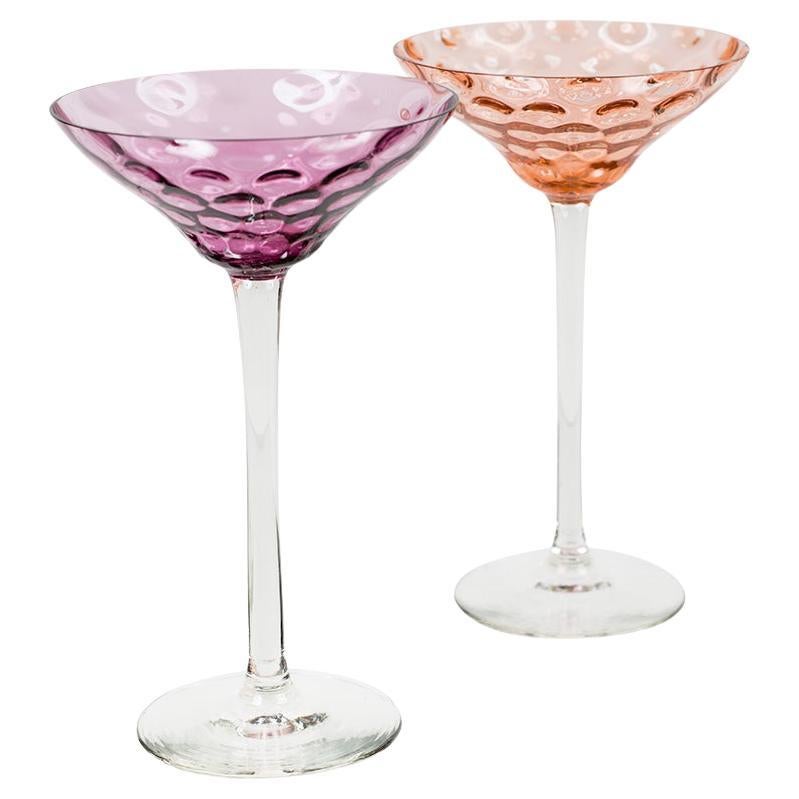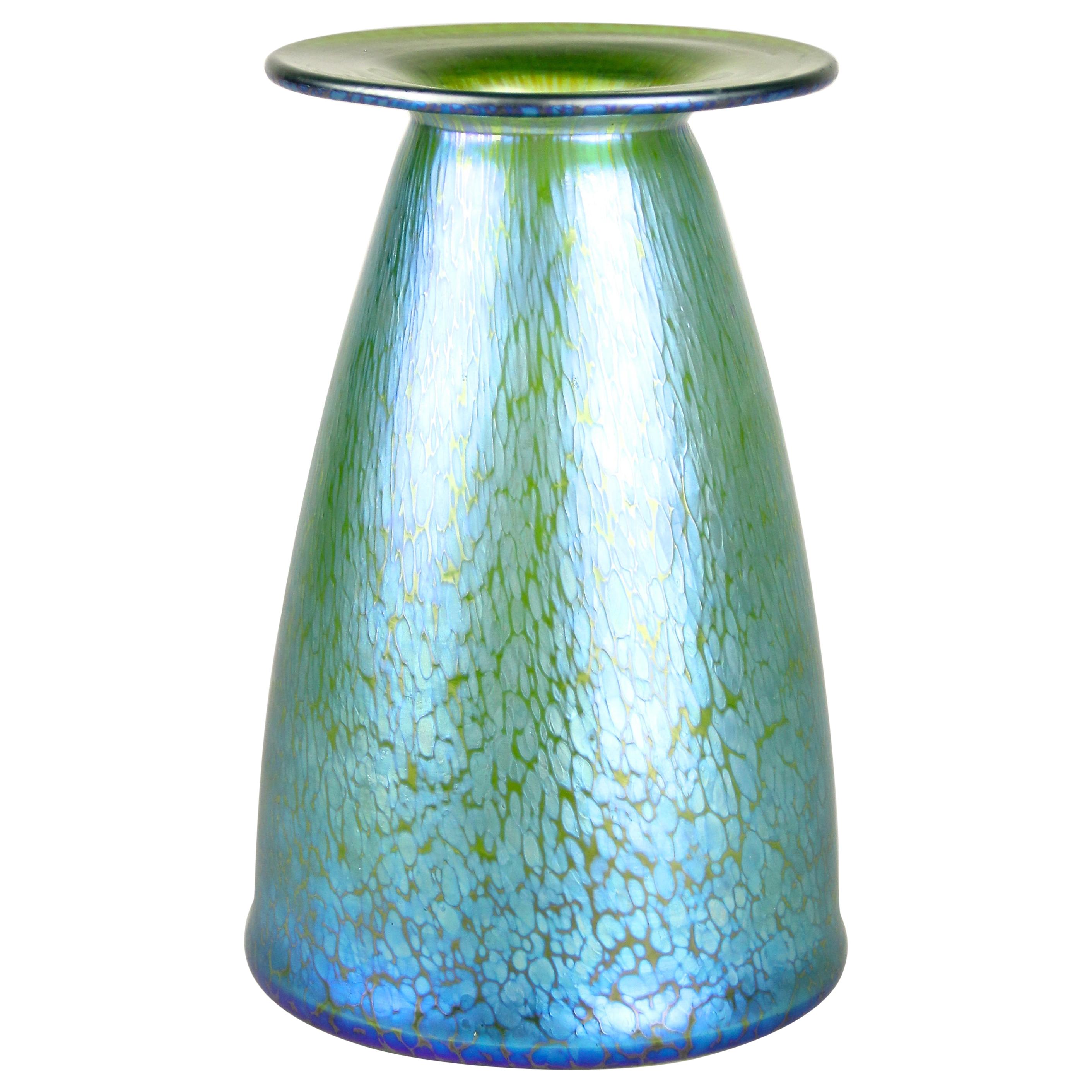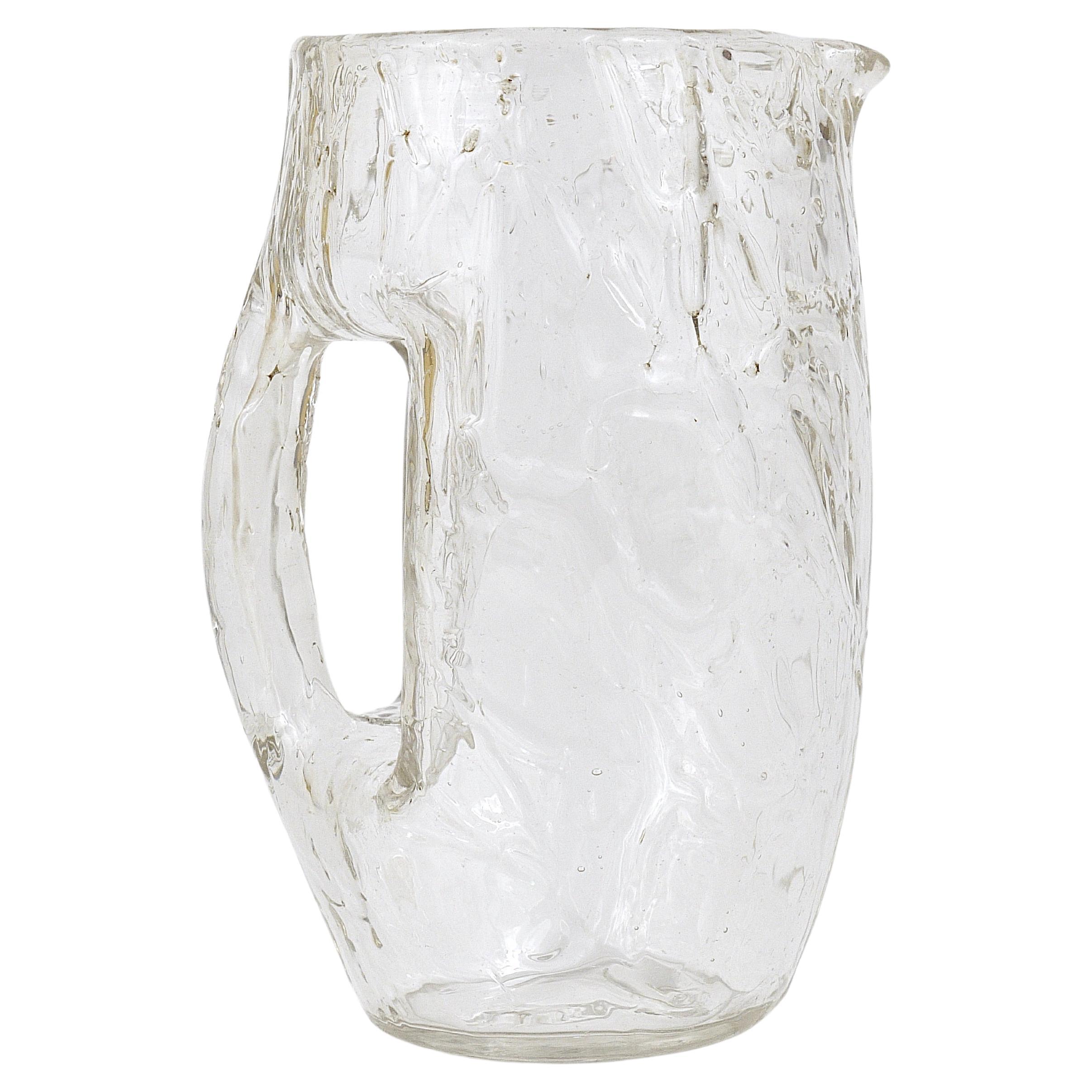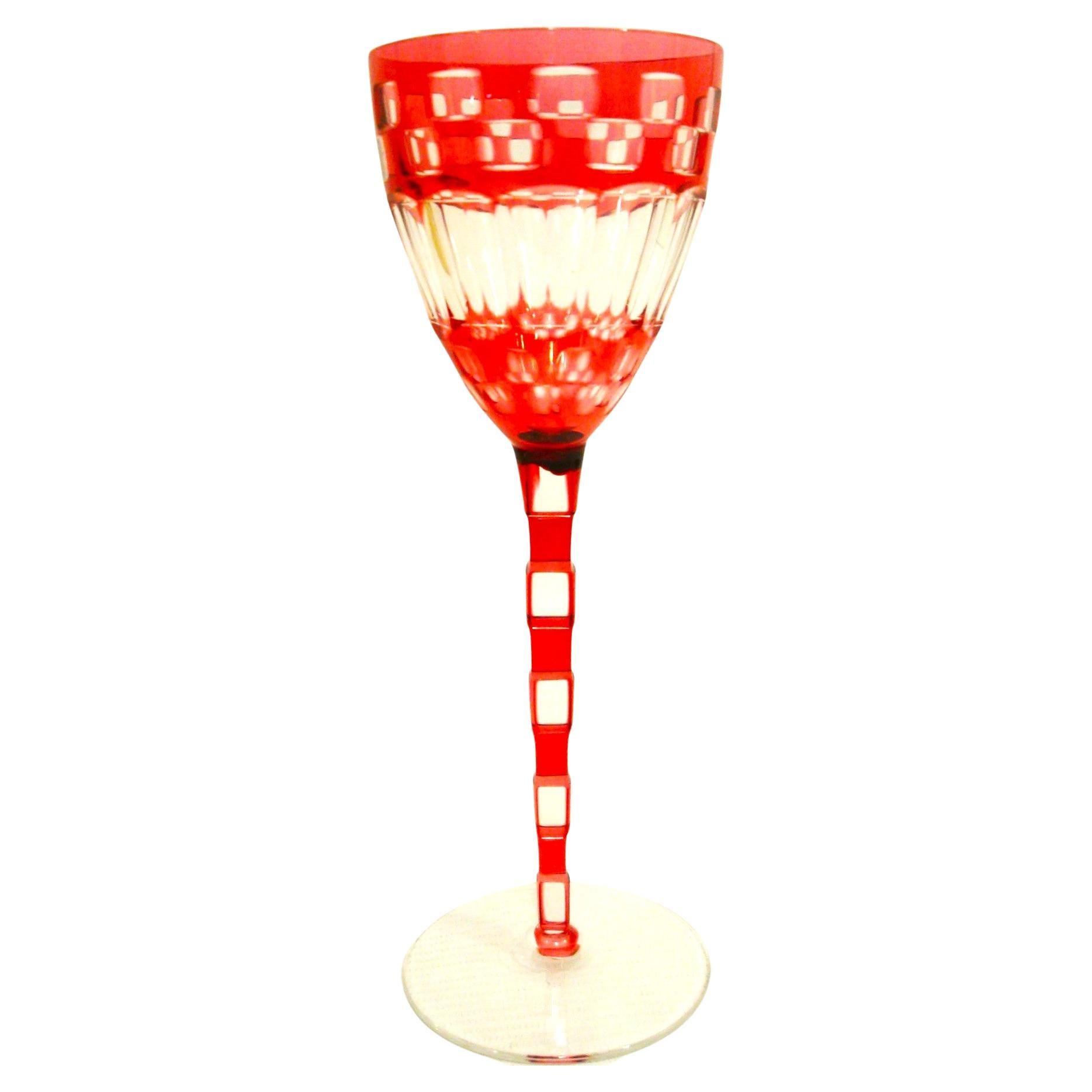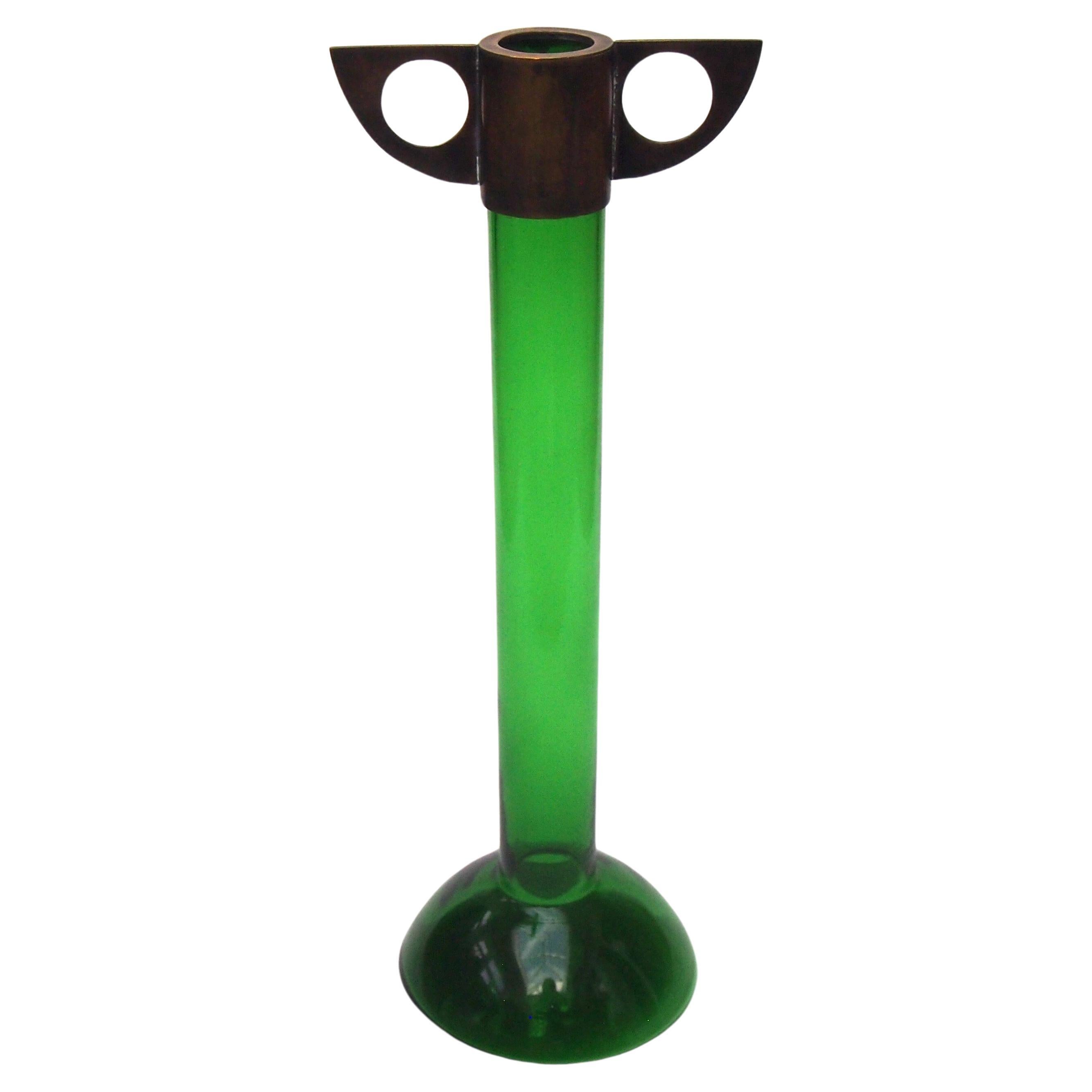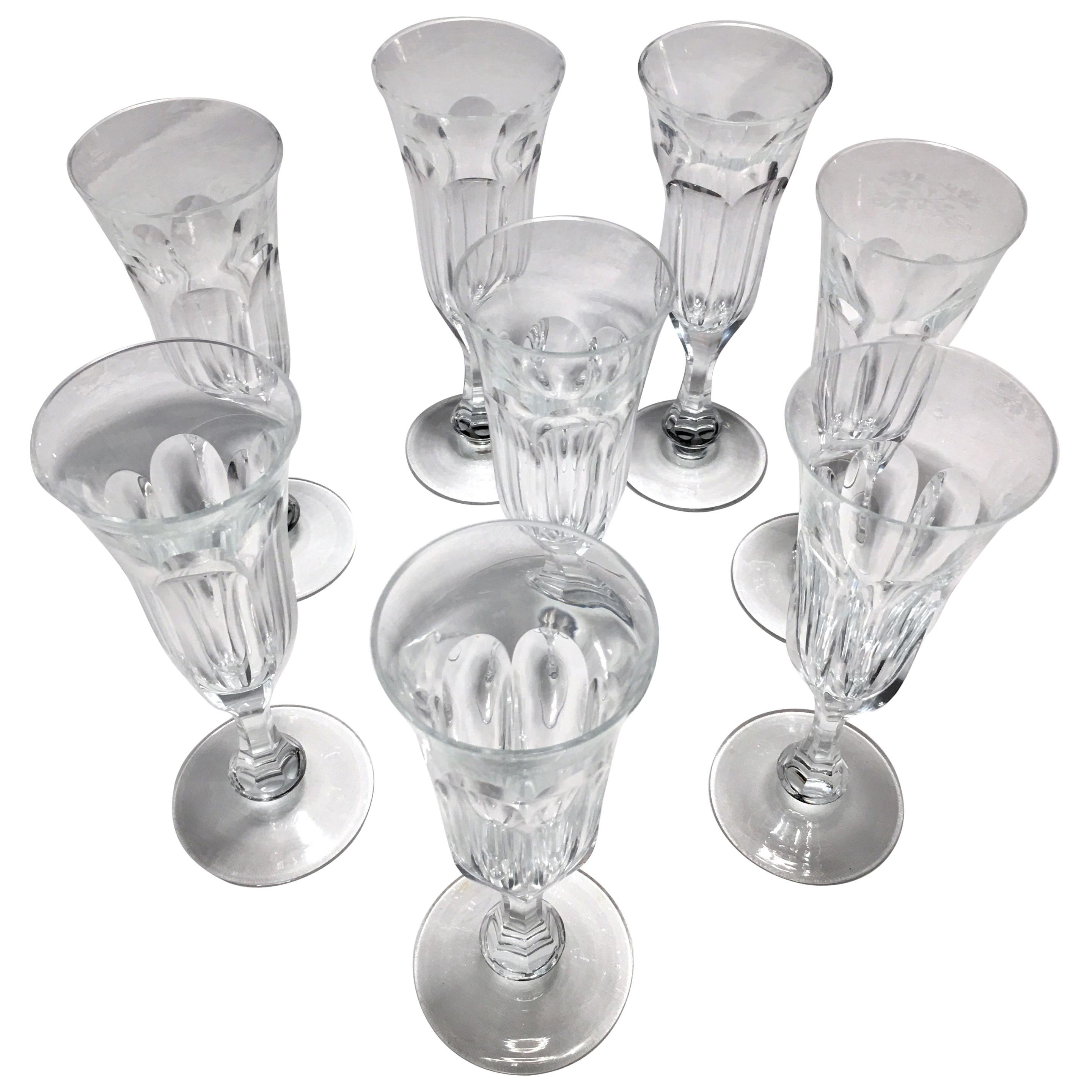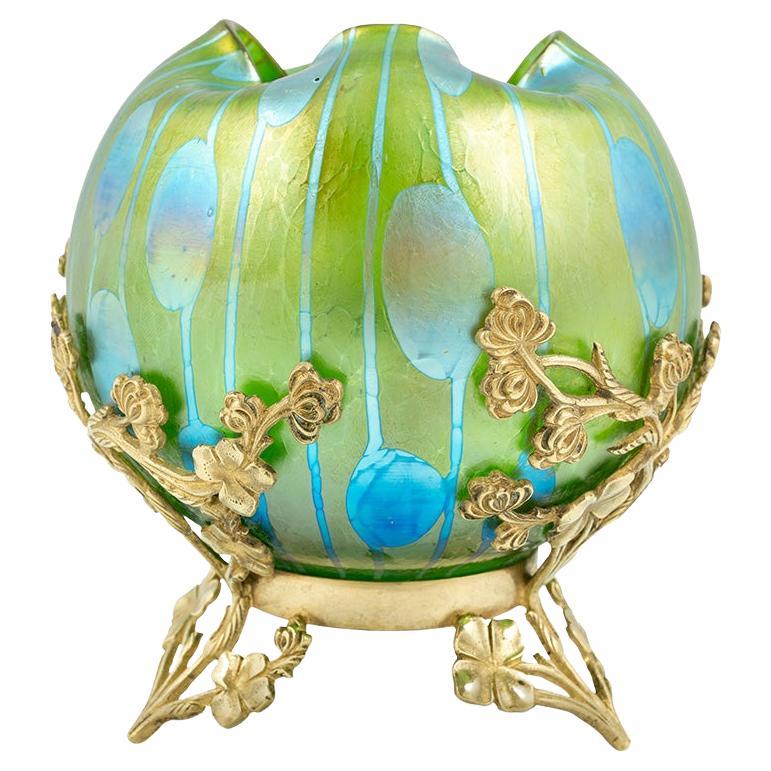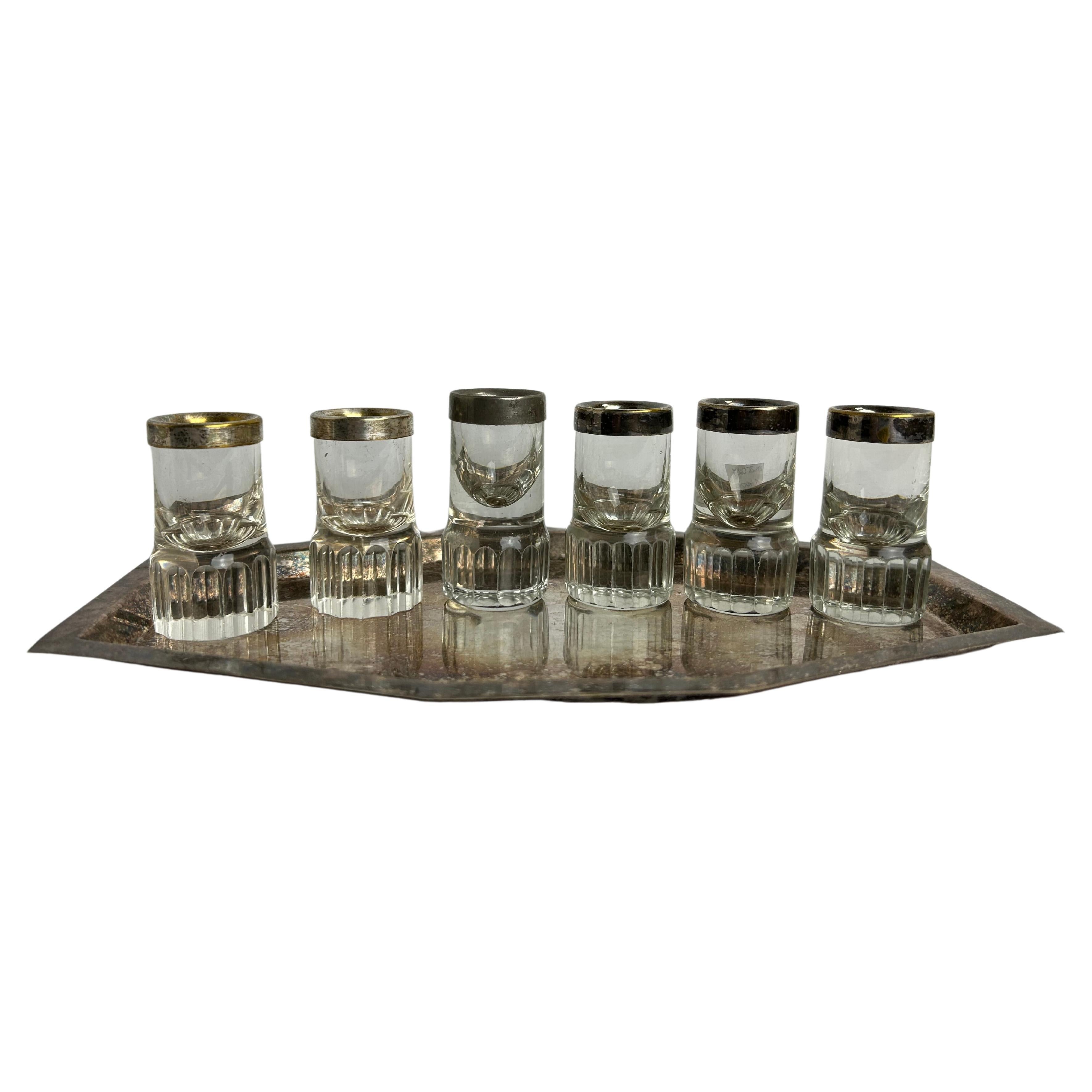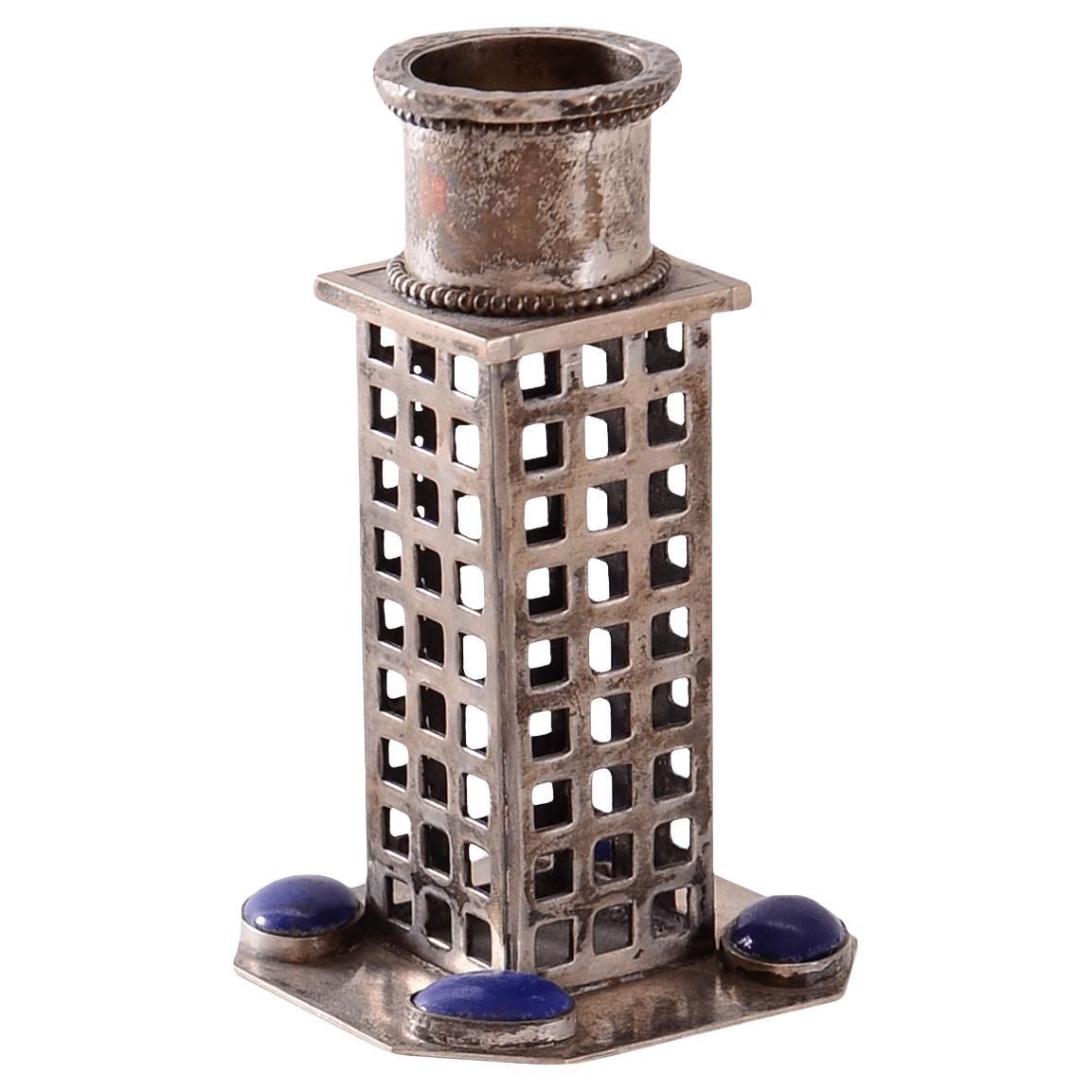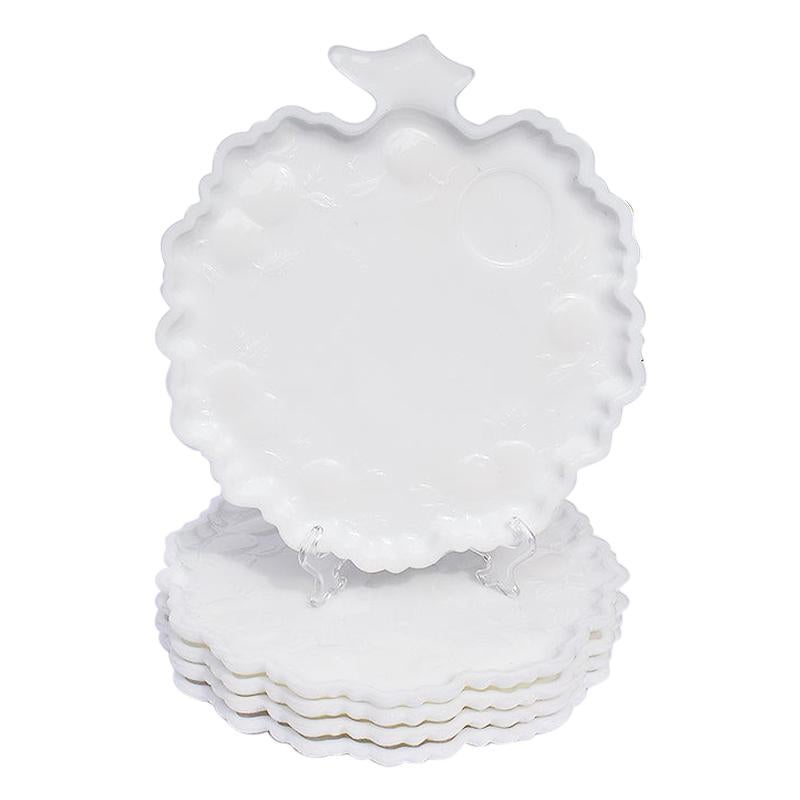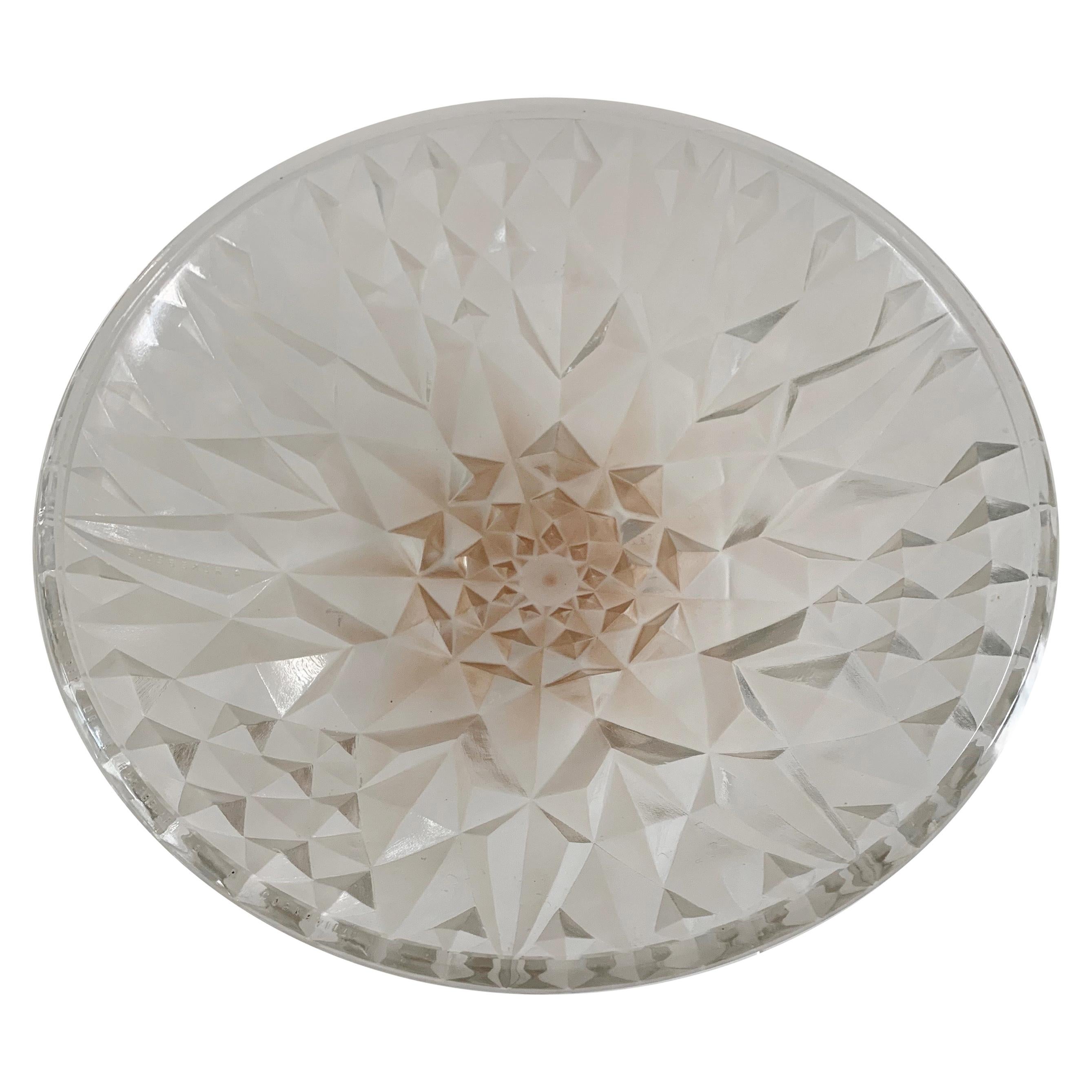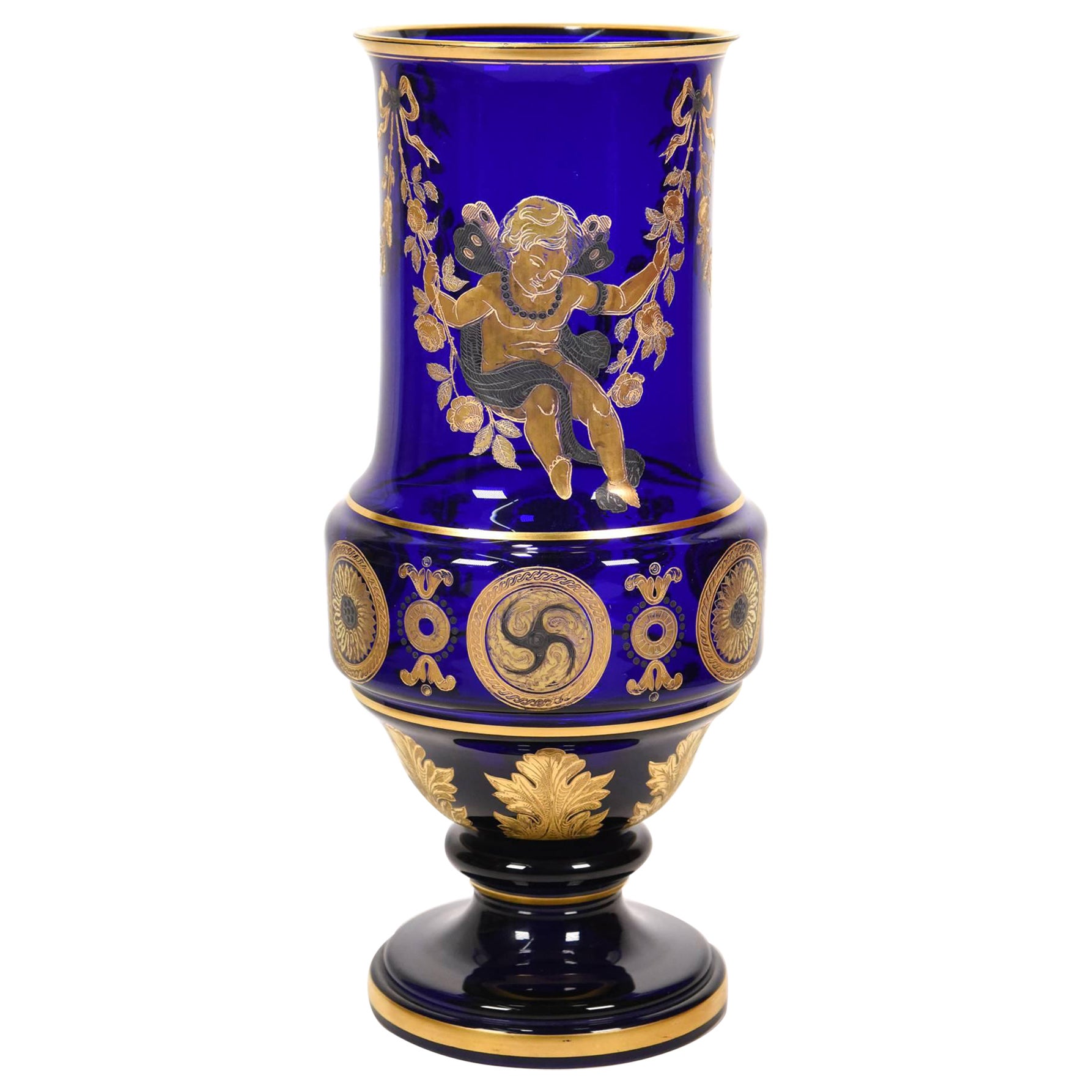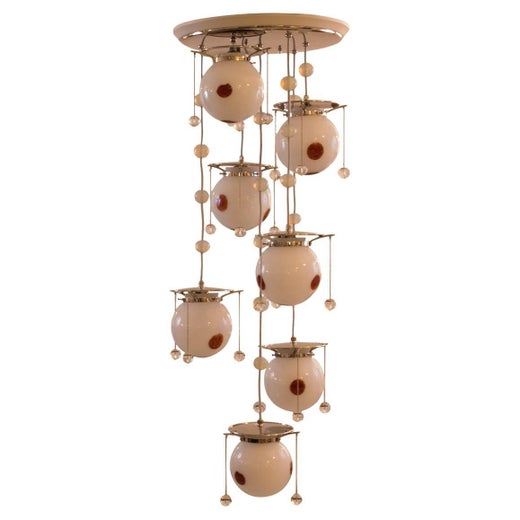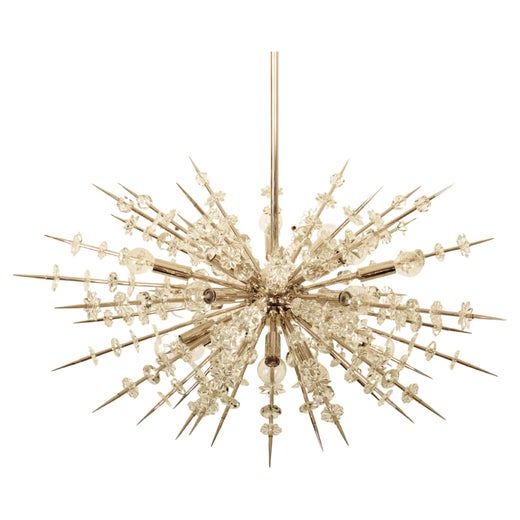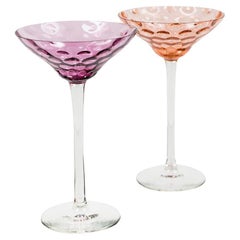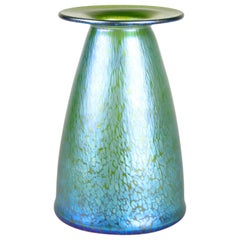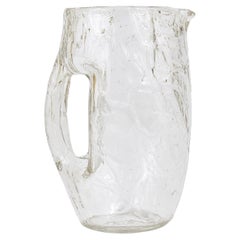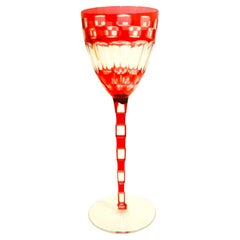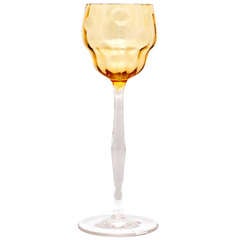
Wineglass Koloman Moser Bakalowits Vienna Meyr's Neffe ca. 1900 Fancy Shape
View Similar Items
Wineglass Koloman Moser Bakalowits Vienna Meyr's Neffe ca. 1900 Fancy Shape
About the Item
- Creator:
- Dimensions:Height: 7.88 in (20 cm)
- Style:Jugendstil (Of the Period)
- Place of Origin:
- Period:
- Date of Manufacture:ca. 1900
- Condition:Wear consistent with age and use.
- Seller Location:Vienna, AT
- Reference Number:1stDibs: LU98151005406
Koloman Moser
Born in Vienna in 1868, Koloman Moser briefly attended trade school, honoring his father’s wish to see him in commerce. But he soon surrendered to his artistic inclinations, enrolling in 1885 in Vienna’s Academy of Fine Arts, where he studied painting.
When his father died unexpectedly in 1888, leaving the family in financial straits, Moser (1868–1918) helped out by doing illustrations for books and magazines. Meanwhile, he continued his painting studies, at the academy and then at the School of Arts and Crafts, starting in 1892. That was also the year that Moser, along with other young artists revolting against the Viennese art world’s devotion to naturalism, formed the Siebner Club, the precursor to the Vienna Secession.
Moser’s introduction during his last term at school to Gustav Klimt’s Allegory of Sculpture proved a turning point for the young artist. Christian Witt-Dörring, guest curator of the 2018–19 exhibition “Koloman Moser: Universal Artist between Gustav Klimt and Josef Hoffmann” at the MAK in Vienna, noted a change in the artist’s drawing style. “Primarily inspired by the art of Japan, [Klimt] introduces new paper sizes, fragmented image details, and an emphasis on the line as opposed to the surface,” wrote Witt-Dörring in the exhibition’s catalogue.
A year later, in 1897, Moser together with Klimt, Carl Moll, Joseph Olbrich and Josef Hoffmann founded the Vienna Secession, a union of artists and designers determined to upend Austria’s artistic conservatism. The members were committed to making total works of art: Gesamtkunstwerken. Looking to the English Arts and Crafts Movement, with its guiding principle of unity of the arts, the group attempted to bring art back into everyday life and introduce a local modernism to fin-de-siècle Vienna. Moser, whose membership in the club also afforded him entry into upper-class Viennese society, turned his back on oil painting and forged ahead with Gesamtkunstwerk.
Moser created everything from exhibition design to facade ornamentation for the Secession Building, to graphic materials. Moser also produced posters and advertisements in his “modern style” for various companies. In 1898, he presented his first decor pieces, including hand-knotted rugs and cushion covers. In 1899, Moser began what would become a lifelong professorship at the School of Arts and Crafts. His repertoire now expanded to include furniture, ceramics and patterns like his trademark checkerboard design. He also moved into scenography and fashion and established himself as an interior designer.
The artist decorated his own home in 1902, after which he received a series of important commissions, notably the villa of textile industrialist Fritz Waerndorfer. It was Waerndorfer who provided the financial support that enabled Moser and Hoffmann in 1903 to found the Wiener Werkstätte, a platform for fully realizing their ideal of Gesamtkunstwerk. Two years later, Moser married Edith Mautner von Markhof, the daughter to one of Austria’s great industrial barons, and his work thrived.
In 1907, the Wiener Werkstätte ran into financial trouble. Losing faith in the unity of the arts and disillusioned with the group’s dependency on wealthy patrons like Waerndorfer, Moser left the Werkstätte. He returned to his original discipline, painting, which he continued to practice until his untimely death from cancer, in 1918.
Today, Koloman Moser’s work, from his metal vases to his jewelry to his interiors, remains sought-after and revered. Browse Moser's radically modern creations at 1stDibs.
Bakalowits & Söhne
Bakalowits & Söhne are prestigious purveyors of bespoke illumination worldwide. With a history of producing unique crystal chandeliers and pendants, wall lights and other lighting fixtures that spans nearly two centuries and five generations, the company is one of the oldest family-owned furniture manufacturers, well-known for its mid-century modern and Hollywood Regency lamps and other lighting designs.
In 1845-era Vienna, Elias Bakalowits opened a shop that established the family’s long tradition of lighting production. Creating lanterns, wall mirrors, candle holders and other lighting, the reputation of the firm spread throughout the Austro-Hungarian Empire. In 1892, when Ludwig Bakalowits was running the company in its second generation, the firm was named Imperial and Royal Court Purveyor and received a lighting order for the Hofburg — Emperor Franz Joseph’s new imperial palace — and its historic ballroom, the Redoutensaal.
Bakalowits & Söhne received the first patents on their chandeliers and other works in the mid-20th century. At the same time, the houses of Parliament, Burgtheater, Vienna City Hall, Vienna State Opera, and Stephansdom needed repairs owing to considerable damage that the structures sustained during the Second World War. Bakalowits & Söhne secured commissions to create fixtures for the partially destroyed, war-torn buildings.
The postwar years saw growth for the brand that extended into the Middle and the Far East. Collaborations with architects in these regions led to creating an immense chandelier, which resides in the parliament building in Belgrade, Serbia. With this growth and expansion came exhibitions at the turn of the century. Among these was the World Exhibition in Paris in 1900, with additional exhibits in other cities, including London, Geneva, St. Petersburg and Turin.
Today, KR Prof. Friedl Bakalowits leads the company in its fifth generation. Bakalowits & Söhne continues to produce chandeliers for individual residences, including palaces, villas and companies worldwide. Their pieces illuminate cultural institutions, hotels, opera houses, conference centers and cruise ships.
On 1stDibs, find a collection of antique and vintage Bakalowits & Söhne lighting, mirrors and decorative objects.
You May Also Like
Antique Early 1900s Austrian Jugendstil Glass
Glass
Early 20th Century Czech Art Nouveau Glass
Blown Glass
Antique Early 1900s Czech Art Nouveau Glass
Crystal
Early 20th Century Austrian Vienna Secession Glass
Glass
Vintage 1910s Czech Vienna Secession Glass
Metal
Antique 19th Century Czech Art Nouveau Glass
Crystal
